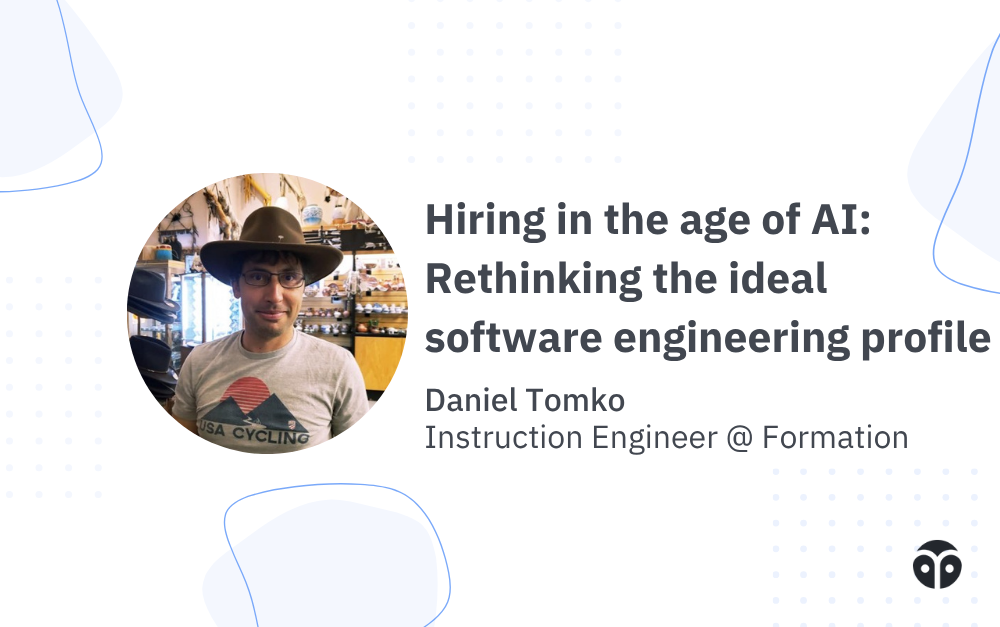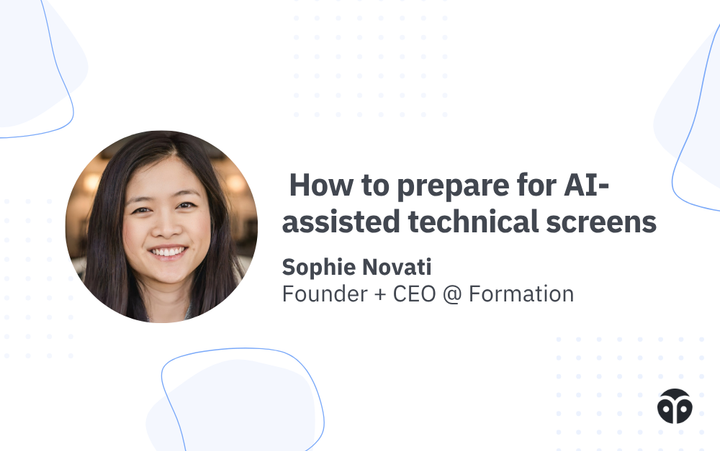Hiring in the age of AI: Rethinking the ideal software engineering profile
AI is changing how software teams create value—fast. Learn what traits define today’s strongest engineers and why hiring strategies need to evolve to meet a shifting, AI-enabled landscape.

By Daniel Tomko
In technology, change rarely announces itself politely. It arrives in waves — messy, turbulent, and sometimes hard to interpret in the moment.
For engineering teams, the past year has felt like one of those waves. AI toolshow they have surged into everyday workflows. Many tasks that were previously done manually are now accelerated through tools powered by large language models (LLMs).
The implications are still unfolding. But one thing is already clear: the profiles of the most effective engineers are changing.
It’s not because technical depth no longer matters. It’s not because prompt writing is the new programming. And it’s not because the tools are doing the thinking. What’s changed is how value gets created on software teams — and how much that depends on qualities traditional hiring often overlooks.
A shifting landscape, not a new one
To understand what’s happening, it’s worth zooming out.
AI is not the first force to reshape the work of engineers. Over the past two decades, the job has expanded dramatically. The craft has become more interdisciplinary, more collaborative, and more exposed to business priorities.
Each shift has demanded something more than familiarity with a particular stack. It’s demanded the ability to learn quickly, make sound decisions with limited information, and operate across abstraction layers. What makes this moment different is the rate of change and how compressed those expectations have become.
There’s a tendency to treat AI like a break in the timeline. Pre-AI, post-AI. But that frame ignores the reality that software engineering has always been a discipline in motion. The AI moment just raises the stakes.
A resume full of keywords won’t tell you how someone navigates ambiguity. And “AI experience” is often too broad to be meaningful. What matters isn’t whether someone has used a language model — it’s how they use it to accelerate productivity and increase impact.
And experience with AI doesn’t necessarily equate to AI fluency, at least not the kind that matters.
The limits of AI-fluency
It’s tempting to imagine that what teams need now is a new kind of hire: the “AI-native” engineer. The profile is seductive because it’s concrete. But in practice, it’s often misleading.
Some of the best engineers on AI-integrated teams are not early adopters or evangelists. They’re not racing to automate everything. What they are doing — quietly and consistently — is adapting. They’re assessing new tools, testing them against their actual workflow, and integrating what works. They ask better questions, share what they’re learning, and help others understand the tradeoffs of change.
This is not a new kind of engineer. It’s a clear-headed version of a profile that’s always been valuable: someone with range, judgment, and the ability to think independently. What’s new is how central that profile has become.
Five traits that matter now
This kind of fluency tends to emerge from a set of traits that have always mattered, but are now critical. Below are five traits that increasingly define the strongest contributors on high-performing, AI-aware teams.
1. Learning velocity
Not long ago, hiring managers could confidently seek out engineers with deep experience in specific languages, frameworks, or systems. Today, that experience still helps, but its shelf life is shorter. As new abstractions emerge and old ones fade, the real differentiator is how someone learns.
This doesn’t mean raw intellectual horsepower. It means observable learning behavior: exploring tools without being told, reading documentation critically, running small experiments, and reflecting on what worked.
In interviews, this often shows up in how someone talks about past work. Do they describe evolving their process? Do they reflect on how their thinking changed? Are they comfortable admitting what they didn’t know, and what they did to close the gap?
2. Judgment under uncertainty
AI tools make it easy to generate output. What they don’t do (at least not yet) is decide whether that output fits the problem and is good, safe, and meets requirements. Or whether the problem is worth solving in the first place.
The strongest engineers today are not just implementers. They’re evaluators. They assess upstream decisions, question assumptions, and bring attention to possible failure modes. When a language model suggests a solution, they know how to validate it, or when to throw it out entirely.
This kind of judgment shows up in lower error rates, clearer documentation, and projects that go live with fewer downstream surprises. It’s the result of thinking clearly, asking good questions, and resisting the urge to move fast without context.
3. Systems awareness
Without context, speed becomes a liability. A generated solution that meets technical requirements but breaks downstream coordination costs more to fix than it saves. Engineers who see beyond their editor — who understand the architecture of the code, product lifecycle, the deployment pipeline, the data implications — create value that persists.
This is especially true in collaborative environments, where one person’s shortcut becomes another’s debugging session. Context-aware engineers help their teams move together. They know what their decisions unlock, or block, for others.
4. Clarity in communication
As tools become more complex and more opaque, the ability to articulate what’s happening becomes essential. An engineer doesn’t need to justify every line of code, but they do need to explain their reasoning, call out uncertainties, and make feedback actionable.
This kind of clarity helps in code reviews, cross-functional planning, and debugging sessions. But it’s also critical when working alongside AI. If a tool suggests a change, can the engineer explain why they accepted or rejected it? Can they describe how it affects system behavior? Can they help others understand the impact?
5. Initiative
Finally, there’s initiative — the tendency to act without waiting for explicit direction. AI has lowered the barrier to trying new things, but it hasn’t eliminated the need to explore, tinker, or revise assumptions. Engineers who take initiative are often the first to notice friction, the first to try a workaround, and the first to suggest improvements that stick.
They’re not reckless. They test before scaling. But they don’t require a roadmap or a greenlight to start learning. In a field that’s being reshaped in real time, that kind of self-starting behavior is increasingly necessary.
What this means for hiring
None of this suggests abandoning technical evaluations. But it does mean rethinking what those evaluations are designed to uncover.
Hiring managers should pay closer attention to how someone approaches problems, not just whether they’ve solved similar ones before. It’s less about checking for the latest tools on a resume and more about understanding how an engineer thinks, adapts, and contributes when the ground is still shifting.
For early-career engineers, the takeaway isn’t to chase every new framework or AI tool. It’s to build a foundation that can flex. That means developing the judgment to know when to rely on tools and when to look deeper. It means learning to break down problems, understand customer needs, and make tradeoffs visible.
That’s the real shift. Not a new kind of engineer, but a renewed focus on the kinds of thinking that help teams move forward — even when the path isn’t obvious.
Get holistic interview prep with Formation
The Formation Fellowship gives mid-level and senior engineering job seekers everything they need to land their dream roles — including personalized skill brush-ups, resume help, unlimited mock interviews with experienced software engineers and hiring managers from top-tier tech companies, career and negotiation support, and more.
If you’re having trouble navigating your job search on your own, apply here and get unconditional support from a team of engineering mentors, technical recruiters, career coaches, and more.



